My Jamaican Oregano plant became the subject of a debate when a visitor identified it as Spanish Thyme, while his wife referred to it simply as Thyme.
After a brief investigation, we were pleasantly surprised to discover that we were all somewhat correct.
Lippia Micromera, also known as Jamaican Oregano, is an aromatic herb native to the Caribbean, Central and South America. It smells and tastes similar to Greek Oregano and serves as a substitute in recipes that require such.
However, contrary to popular belief, Lippia Micromera is not a true Oregano, earning another common nickname, False Oregano.
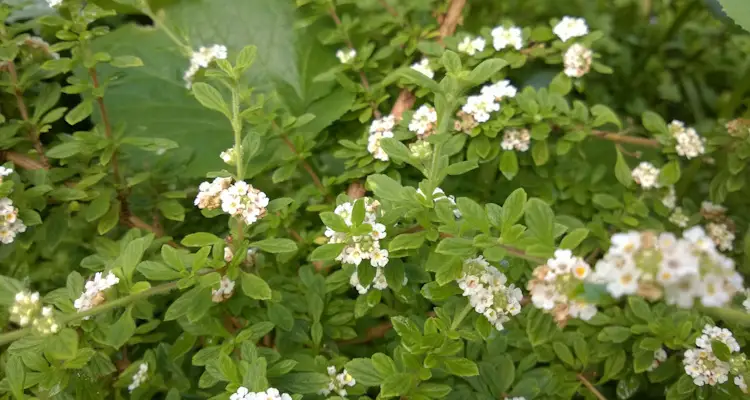
Before this, I had never really paid too much attention to what I believed was Oregano growing in my garden.
In this article, we will explore some amazing uses and benefits we came across in our research, as well as some little-known characteristics of this valuable herb.
Let’s Get Started!
The Easiest Way To Identify Lippia Micromera
If it looks like Oregano and smells like Oregano, chances are it is Oregano, Unless it is not. In the case of Jamaican Oregano, the latter is true.
Lippia Micromera is a flowering, tropical perennial belonging to the Verbena family. It has clusters of white flowers which accent its tiny green leaves. These leaves branch out from a woody stem and grow up to 6 feet tall.
While their leaves resemble a larger version of Fine Leaf Thyme, Thymus Vulgaris, I was surprised to find out that Lippia Micromera is neither an Oregano nor a Thyme.
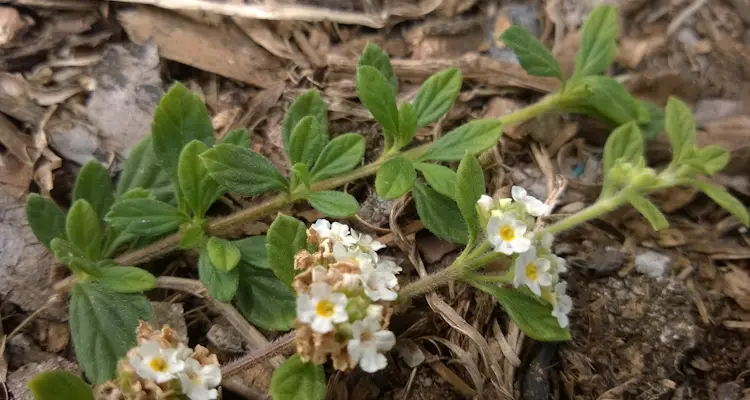
What Are Some Common Names For Lippia Micromera?
Lippia Micromera is native to the Caribbean, Central and South America but grown extensively in tropical regions worldwide.
Due to its appearance, flavor, and aroma, it has many common names likening it to Oregano, Thyme, or perceived country of origin.
Some common names for Lippia Micromera include False Oregano, False Thyme, Spanish Thyme, and Jamaican Oregano. There are a few other island and language-specific nicknames. However, in most islands, it is known as Oregano.
Note: You may have noticed that Lippia Micromera is also called Spanish Thyme in Puerto Rico and certain parts of Trinidad and Tobago. However, the Plectranthus Amboinicus plant is considered Spanish Thyme in most other countries.
5 Ways To Use The Lippia Micromera (Jamaican Oregano)
Throughout the Caribbean, many people use Lippia Micromera to prepare various dishes such as soups and stews. However, there are some other uses I think are worth mentioning.
Let’s look at five uses of Lippia Micromera, starting with the most popular.
1. Seasoning For Meats
Lippia Micromera has a robust Oregano flavor and is often used to season pork, beef, and even wild meats.
It can be finely chopped and used in recipes, but I prefer to combine it with other herbs and blend it to create a liquid green seasoning.
The beauty of homemade green seasoning is that each batch is unique and modified to your particular taste.
For starters, you can add common herbs such as Chive, Fine Leaf Thyme, Spanish Thyme, Celery, Shadow Benny, Garlic, and Seasoning Peppers.
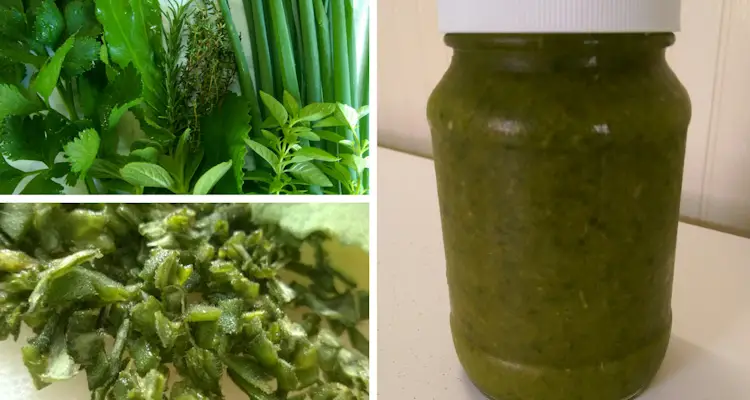
By themselves, each of the herbs listed above is overpowering, but when combined, they create a balanced blend, perfect for drawing out the flavor of your dishes.
2. Flavoring To Soups, Pizzas, And Salads
The young leaves of the Lippia Micromera plant have a much milder Thyme flavor and can be eaten raw.
The fresh leaves can be used as toppings on pizza or dried to flavor the dough.
You can add some leaves directly into salads. However, I prefer to use it to make an Italian salad dressing.
3. Substitute For Oregano
Lippia Micromera is known simply as Oregano in many Caribbean islands, hence Jamaican Oregano.
Traditionally it was used as a substitute in recipes that require Oregano.
Even more impressive is that it can also be dried, stored, and used similarly.
4. Attractant For Pollinators
Lippia Micromera is a flowering, tropical plant. It produces clusters of white flowers which attract a host of beneficial insects.
As a result of these flowers, some people grow this shrub solely for decorative purposes.
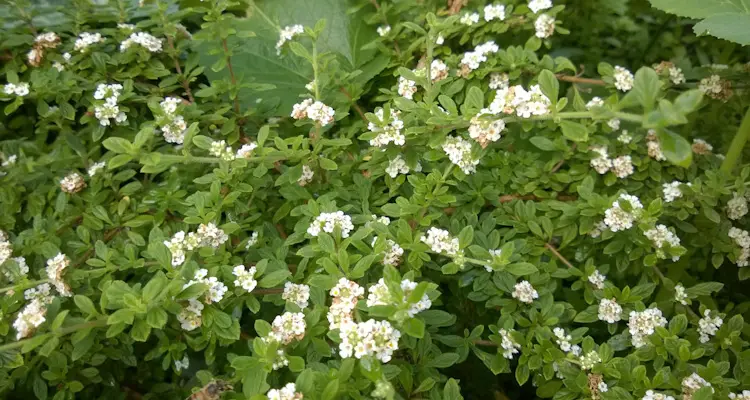
The intense aromatic leaves also serve as a deterrent to certain insects. However, this is usually most effective when the branches rush against other objects or extract the oils.
5. Medicinal Uses Of Lippia Micromera
Traditionally, many people used Lippia Micromera to treat asthma, common cold, flu, and digestive issues. Some people even use it to make a mouthwash.
You can make Jamaican Oregano tea by allowing the leaves to seep into boiling water for about 10 minutes or use the infused steam as an inhalant.
Most evidence to support its effectiveness was hearsay at best until research proved that its essential oils contain various compounds with antifungal and antibacterial properties, among others.
Due to these compounds, women should avoid or limit the use of this herb during pregnancy.
While helpful, you should also use Lippia Micromera in moderation and seek professional advice if you intend to use it for medicinal benefits.
How To Grow Lippia Micromera
Lippia Micromera can be grown from either seeds or cuttings. However, cuttings seem like the most common method.
I got my cuttings from a seasoning bundle that I purchased at a farmers’ market.
Lippia Micromera is easy to grow from softwood cuttings but will fail if allowed to dry out or receive too much water.
If possible, try planting at least four cuttings at a time to stand a better chance of success.
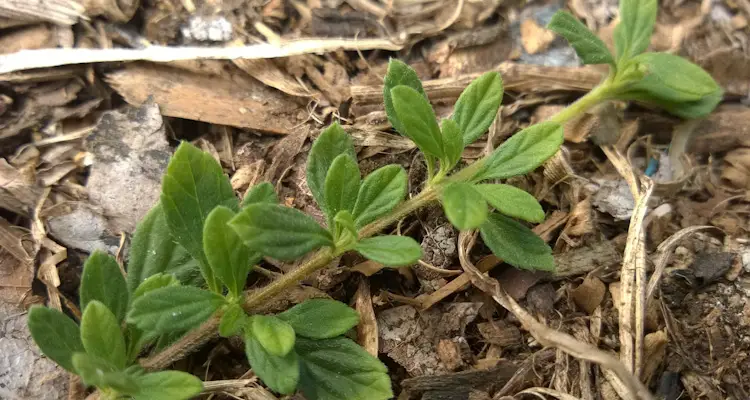
You can follow these steps to grow Lippia Micromera from cuttings.
- Fill a small container with moist potting mix.
Ensure the container has suitable drainage holes.
- Dip the plant cutting in rooting powder; cinnamon powder can also work.
- Place the cutting into the container, then into a plastic bag or germination chamber.
This enclosure allows the mix to remain moist while the cutting is setting root.
- Keep the potting mix moist. You should start seeing new growth in about three weeks.
However, allow it to grow for an additional month before transplanting, if possible.
- Pot up or transplant the cutting. Place the plant in a cool, well-lit area, water when necessary.
Once established, Lippia Micromera is drought tolerant and can withstand short dry spells.
How to dry Lippia Micromera leaves
The leaves of the Lippia Micromera plant are well suited for drying. They are small, thin, and highly aromatic, indicating the presence of essential oils.
You can dry the leaves in an oven or use a dehydrator, but you can quickly dry them in the sun due to their low water content.
Spread some branches on a tray in a sunny, well-ventilated area. Allow it to dry until the leaves become crispy to the touch.
These dried leaves can be used in cooking as you would with dried Oregano.
Final Thoughts
Before our little debate, I believed that my Lippia Micromera plant was Oregano.
While this proved to be incorrect, I was pleased to learn about the benefits and possible uses.
I am still learning more about this valuable plant and intend to one day be able to use it to its full potential.
In the meantime, I will do my best to continue growing and preserving this mysterious False Oregano.
Related Questions
What is the difference between Jamaican Oregano and Italian Oregano?
While it is sometimes called Italian Oregano, Jamaican Oregano belongs to the Verbena family. In contrast, actual Italian Oregano refers to a variety of herbs in the Mint family, Lamiaceae, originating from the Mediterranean region.
References
Integrated Taxonomic Information System. Lippia Micromera. itis.gov. Accessed February 2022
Herb Society Of America. Oregano And Marjoram. [PDF] Accesses February 2022
